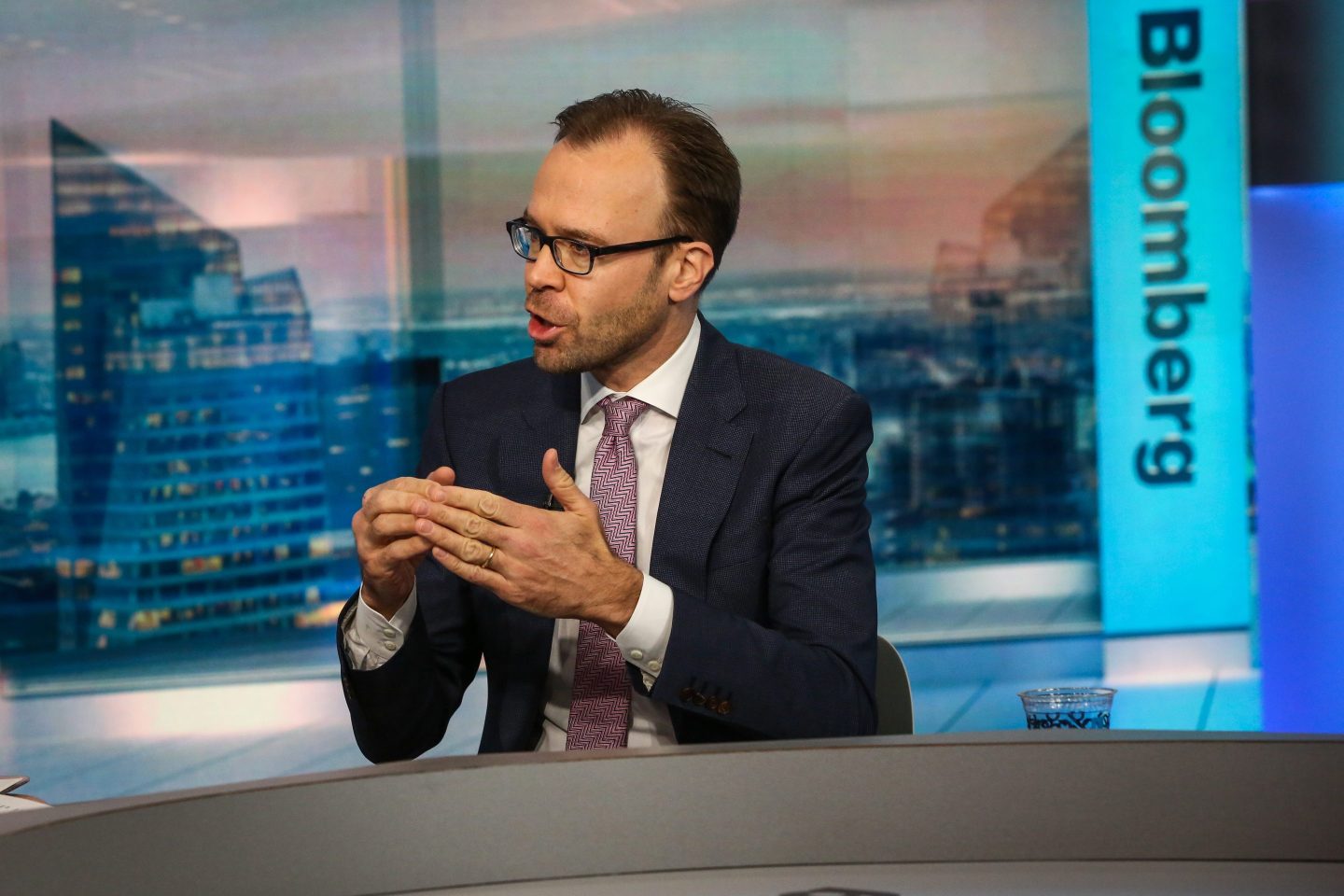- Goldman Sachs’ Jan Hatzius warned that U.S. GDP estimates showing 3.8% growth in Q2 and 3.3% in Q3 may be overstated, owing to missing data from the government shutdown and weakening labor trends. He pointed to falling employment indicators and survey data signaling stagnation, arguing job market weakness offers a more accurate gauge of current growth. Hatzius also cited temporary boosts from tariff-driven stockpiling earlier this year and warned that younger workers face growing hiring challenges, particularly as AI adoption reshapes labor demand.
GDP estimates that show steady growth in the American economy may prove to be overly optimistic, Goldman Sachs warned, as a vacuum of data during the government shutdown may result in employment figures ultimately dragging down the optimistic outlook.
In a note seen by Fortune, Goldman’s chief economist, Jan Hatzius, highlighted that GDP estimates have moved up sharply during the government shutdown, with Q2 tracking at 3.8% and Q3 at 3.3%. By some estimations, that figure is even higher: The Federal Reserve Bank of Atlanta, for example, wrote in an Oct. 17 update that Q3 GDP may track as high as 3.9%.
Despite the stock market rallying steadily, the Fed is expected to cut rates at least once more before the end of the year. And with the growth trajectory looking positive, Wall Street has every reason to celebrate—right?
Not quite, according to Hatzius. He warns that employment may prove to be the thorn in the side of the rosy outlook, coupled with changing business behavior in reaction to shifting policy from the White House.
On the employment side, Hatzius noted the labor outlook in surveys, such as manufacturing and service growth, had fallen “well below [the index midpoint of] 50, consistent with employment stagnation or even contraction.” As a result, Goldman’s labor market tightness tracker (which averages out data including the estimated unemployment rate, estimated job openings, the Conference Board’s labor market differential, and the New York Fed’s job findings expectations, to name a few), has eased to 2016 levels and is continuing to trend downward.
Hatzius notes: “Household surveys are already very negative. For example, the expected change in the unemployment rate over the next year has never been this bad outside recessionary periods since the University of Michigan started asking the question in 1978.”
As such, “since job market indicators often provide more reliable information about current growth than the preliminary GDP estimates, this weakness adds to our conviction that Q2/Q3 GDP sends too positive a signal,” Hatzius adds.
A compounding factor in this optimism is distortion in the growth figures owing to business sentiment in the earlier parts of this year. Hatzius explains this is the result of “front-loading of durable goods purchases as well as volatility in inventories and net trade.”
This behavior was, of course, prompted by President Trump’s tariff plans announced earlier this year. With threats ramping up between America and its trading partners, businesses began front-loading their orders in a bid to stockpile inventory at cheaper prices.
As the Fed observed, this shift was particularly concentrated in March when U.S. import volumes from several major trading partners—most notably the euro area and Taiwan—spiked by 75 basis points compared with the end of 2024.
Outside of these durable goods, Hatzius adds, “survey measures of both manufacturing and services growth—which are less affected by front-loading—remain around 50, consistent with stagnation or very slow growth. While reduced drag from higher tariffs, imminent tax cuts, and easier financial conditions have improved the outlook, we therefore feel comfortable with our view that underlying growth is accelerating only gradually.”
Problems for labor market entrants
Hatzius also echoed the concern of other high-profile economists relating to job prospects for younger individuals in particular. Fed Chair Jerome Powell, said earlier this year that “it’s just gotten tough for people entering the labor force to be hired.” That being said, Powell warned that if talent possesses tech skills they were more likely to land roles and even do “great,” he added: “If you don’t have those skills, though, you’re increasingly left with less attractive employment options.”
Goldman’s chief economist has come to the same ultimate conclusion, that young people are struggling to get hired, but said part of this is because of the emergence of artificial intelligence.
“While the pattern of job growth does not yet show a strong correlation with AI exposure at the industry level, employment opportunities for younger workers in tech occupations have weakened, and many more management teams are jointly mentioning AI and labor on earnings calls,” Hatzius noted. “Suppose underlying growth remains muted or weakens anew. In that case, history suggests that labor demand—especially in “routine cognitive” occupations but perhaps also more broadly—is likely to decline further with increased AI penetration.”













